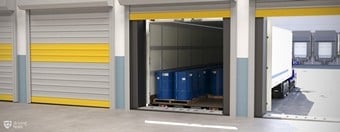

All your missed questions are saved
automatically for extra practice.




It's a practice test that's automatically made up of all your missed questions. Once you finish this test, you’ll be able to revisit your Challenge Bank™ to practice and sharpen your skills.
View All PlansAdding difficult questions to Challenge Bank™ is an exclusive Premium feature. Unlock access to 650+ exam-like questions, a Pass Guarantee, personalized study plans, and more.
View All PlansFree Delaware CDL HazMat Endorsement Practice Test 2026
| 90-100 | => | 16% |
| 80-89 | => | 34% |
| 70-79 | => | 28% |
| 60-69 | => | 11% |
| <60% | => | 10% |
Ready to jumpstart your Commercial Driver’s License (CDL) with instant access to more job opportunities and potentially higher pay? Adding the Hazardous Materials (Hazmat) endorsement to your Commercial Driver’s License (CDL) is a powerful way to do just that! The Hazmat certification enables you to transport materials that the U.S. government regulates as hazardous. Explosives, certain types of fuel, industrial chemicals, and radioactive materials represent a whole new set of opportunities on the horizon. Above all, this endorsement ensures the highest level of safety for you, the people around you, and the environment.
The process for a Hazmat endorsement requires you to be fingerprinted, pass a background check, and pass the DMV knowledge test. The topics covered in this test include federal regulations, material handling, packaging, transport configurations, and quantity limits. Delaware’s knowledge test is made up of 30questions and you’ll need a score of at least 80% (24 out of 30 answers) to pass (Delaware CDL Handbook 2026). This requirement ensures that you are well prepared for the responsibilities that come with transporting hazardous materials. Lastly, the minimum age for the Hazmat endorsement is 21 for interstate transport, and in Delaware, this applies to intrastate work as well.


Reviewed for legal and handbook accuracy
M.S., Chief Educational Researcher (ACES member)
Last verified for accuracy on
Real Delaware drivers who passed first try
Verified student reviews • Shared with permission
About the Delaware CDL
Okay, having shared all of that, let’s get back to the potential income increase available with this endorsement. According to the 2026 Delaware CDL manual, the Hazmat endorsement allows drivers to handle more specialized cargo hauls! In Delaware, there are multiple industries with cargo transport requiring a Hazmat endorsement, including chemical manufacturing (DuPont and Chemours are notable companies here), petroleum and energy, agriculture, waste management, healthcare and pharmaceuticals, and manufacturing and industrial services. That’s a lot of new job opportunities, but it does sound a little daunting, right? It doesn’t have to be at all.
Our Delaware DMV Hazmat Endorsement practice tests strategically circumvent all of the unnecessary information you’ll come across during an internet search and organize only the most relevant material in a design that mimics both the structure and content of what you’ll face at the DMV site. When you feel ready, take your documents to the DMV, pay any fees, and take the official knowledge test.
More DE CDL test resources
Are you in another state?
- Alabama
- Alaska
- Arizona
- Arkansas
- California
- Colorado
- Connecticut
- Delaware
- District of Columbia
- Florida
- Georgia
- Hawaii
- Idaho
- Illinois
- Indiana
- Iowa
- Kansas
- Kentucky
- Louisiana
- Maine
- Maryland
- Massachusetts
- Michigan
- Minnesota
- Mississippi
- Missouri
- Montana
- Nebraska
- Nevada
- New Hampshire
- New Jersey
- New Mexico
- New York
- North Carolina
- North Dakota
- Ohio
- Oklahoma
- Oregon
- Pennsylvania
- Rhode Island
- South Carolina
- South Dakota
- Tennessee
- Texas
- Utah
- Vermont
- Virginia
- Washington
- West Virginia
- Wisconsin
- Wyoming
We know what it takes to pass. And we’ve got the proof.
Driver’s Ed is - nobody wants to set foot inside the DMV. That’s why millions of learners trust us for simple, visual, effective prep.
An official & trusted partner in driver education
We are an officially recognized FMCSA Entry-Level Driver Training provider and a proud partner to over 2,500 libraries. We work with safety organizations like GHSA and the National Safety Council to help create safer roads for everyone.






A smarter way to study
Challenge Bank™
Our trademarked system automatically saves questions you miss, creating personalized tests that target your weak spots until you’ve mastered the material.
AI-powered feedback
Get smarter as you study. Our new AI-powered feedback provides detailed, question-level insights to help you understand the why behind each answer.
Interactive handbook
Go beyond the boring black-and-white manual. Our interactive handbook lets you read, listen with an MP3 audio version, or even chat with it to find the information you need, faster.
We build our practice questions from the current 2026 DE Driver Handbook and refine them using patterns recent test‑takers report.
Driver handbook • Knowledge‑test/permit overview • Fees & ID requirements • Office/appointment info
We mirror recurring themes (e.g., right‑of‑way traps, sign look‑alikes) and use similar distractors and wording styles.
We don’t collect or publish actual test items and we’re not affiliated with DMV.

